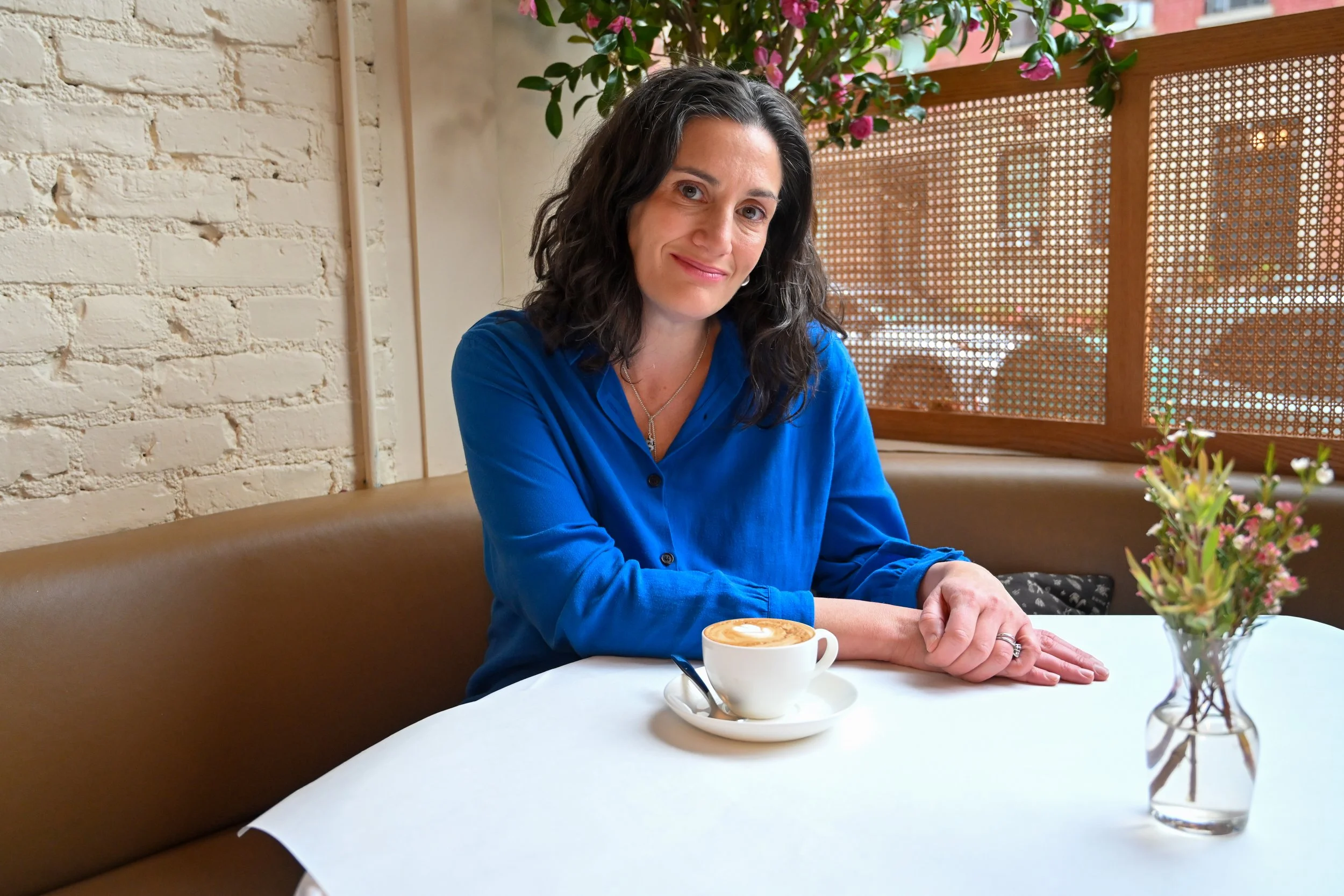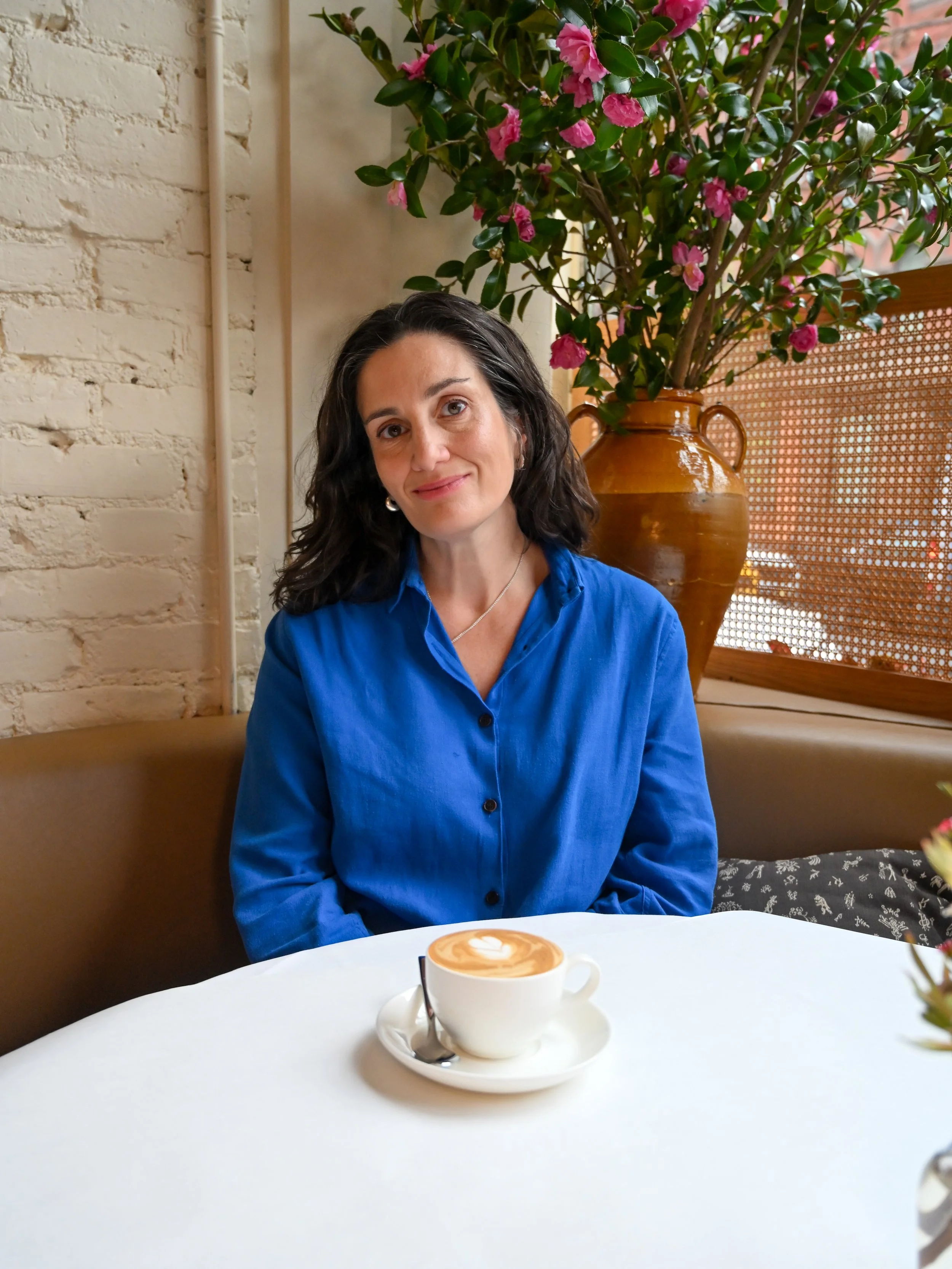Emily Weinstein
West Village, Manhattan
On a wet, gray Thursday in November, we ducked out of the rain and into the warmth of King to meet with Emily Weinstein. With the holidays looming and dinner parties stacking up, there’s no one we owe more gratitude to than Emily. As Editor in Chief of NYT Cooking and Food, she’s helped define a new era of assured, intuitive home cooking, developing muscle-memory for us to open the Cooking app the moment we wonder what to make next. Since her early days in the once–storied New York Times Dining section, she’s honed an instinct for what simply works in the kitchen, a skill she describes as a form of empathy for the reader. And truly, that care shows up in every step of a recipe and every bite of what comes out of it.
Full name, age, and where are you from?
Emily Weinstein, I’m 44 and I’m from Montclair, New Jersey.What inspired you to get into this industry?
So I set out to be a journalist. I always loved food, ever since I was a tiny kid I was obsessed with food, but I didn’t grow up in a food house. My parents loved good food, but they didn’t cook. It never crossed my mind that you could be a food journalist, so I set out to do long form reporting and editing. Then I happened to get this freelance job at the New York Times in the Dining Section, now it’s called Food & Cooking, but back then it was Dining. I showed up for work at the New York Times in the newsroom, and spent a week on this new freelance job and had the “oh” moment where I realized I should do this!NYT Cooking has such a distinct voice and aesthetic. How do you define what “belongs” in NYT Cooking?
We’re looking for recipes that are really smart. Bonus if they’re really simple. Think of it as that genius lightbulb moment that makes something incredibly simple and incredibly delicious. Those are really hard. People think doing simple recipes is easy, but doing simple recipes is the hardest thing. Also, of course, just people who have amazing palates. Some of our recipe developers combine flavors, textures, and techniques in such surprising ways it’s another kind of lightbulb moment.
Food media is evolving so quickly, with more creators publishing independently online. How do you keep NYT Cooking relevant and distinct in such a crowded space?
There’s no one formula, but there are definitely a few things I think about. First of all, the food itself has to feel fresh and relevant. There’s no use putting something in front of people that they’re not going to be excited to cook. At the same time, we have to be so attuned to your readers’ needs and your app users’ needs. It’s a form of empathy. If you’re not a habit in their life, or they can’t rely on you for their routine, then I think it’s hard to thrive. It’s important to meet people where they are and give them something new to love and cook.Also the reliability of it and the promise of quality. We test and edit our recipes to such a high degree that you should be able to go into the kitchen with an NYT Cooking recipe and feel confident that it’s going to turn out great. That also is part of the trust and habit forming.
Can you share a recent story or recipe that surprised you? One that resonated far more than expected?
The way I feel about this question is the way I feel when I’m asked what the last great restaurant I ate at is. I eat at restaurants constantly, and my mind absolutely goes blank! Most surprising recipe, is actually one that I knew would be great. That’s not the part that surprised me. It’s a whole saffron chicken and rice baked in a Dutch oven, written by Naz Deravian who’s a really wonderful recipe writer. It’s been on Cooking for a while, I had just never made it before. I was poking around kind of unsure what to make one night, and it popped up. It reminded me I had been meaning to make it, and again I knew it was going to be great, but it was such a nice surprise and a joy to feel like I was in such good hands while I cooked it.Naz is such an incredible writer, and you feel like someone is really walking you through the steps in such a calm, warm, and focused way. The only part of the recipe that’s really tricky she talks you through. It was a totally delicious dish. The rice gets flavored with the schmaltz from the chicken, and the turmeric. It’s tender and falls off the bone. Again, not a surprise, but at the end you’re left with something so amazing, and I felt so taken care of the whole time. That writing is its own highly specialized skill.
What, to you, is the best city for food right now?
Well part of the reason I suggested here [King] is because it’s one of my favorite restaurants. But I was just in L.A. for work, and it really is amazing there. I also go to the Bay Area quite a bit, I have family and friends there, so between work and personal I’m out there a lot. The Bay Area is also still so amazing. It feels to me like people talk about the restaurants there a little less than they used to, and it’s still so phenomenal. Every time I’m there I have a bunch of incredible meals.If you could shout out a colleague or friend in the industry who would it be and why?
The first person who comes to mind is Samin Nosrat, who’s a friend but also it’s so amazing to see her with her new book. The book is wonderful and she’s really a force for good in this world. I think because of her book (Good Things) and because she has a newsletter now, I’m constantly reminded of how wonderful she is.Where can we find you dining on an ideal solo evening?
Mostly when I’m eating alone I’m traveling for work, and there is nothing more delicious than a really good room service hamburger that you eat in a robe on the bed with a glass of wine. That to me is the best solo meal. Even without the room service context, there’s something so satisfying about sitting at the bar for a great burger and martini.




